Hubble Sees The Force Awakening In A Newborn Star
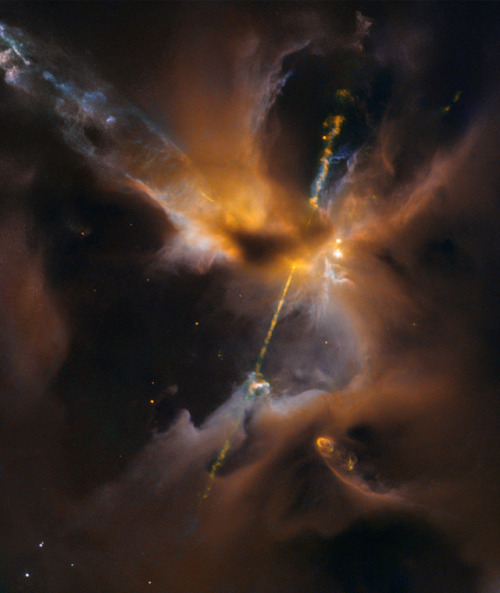
Hubble Sees the Force Awakening in a Newborn Star
This celestial lightsaber does not lie in a galaxy far, far away, but rather inside our home galaxy, the Milky Way. It’s inside a turbulent birthing ground for new stars known as the Orion B molecular cloud complex, located 1,350 light-years away.
In the center of the image, partially obscured by a dark, Jedi-like cloak of dust, a newborn star shoots twin jets out into space as a sort of birth announcement to the universe
Credit: NASA/ESA
More Posts from Xyhor-astronomy and Others

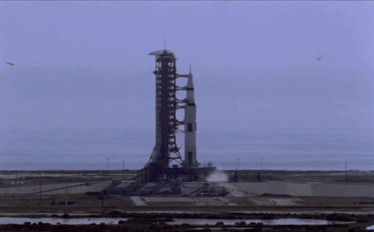
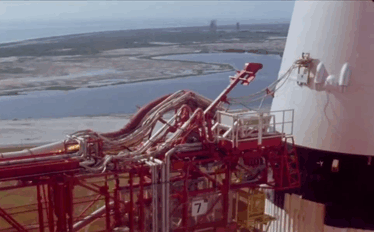
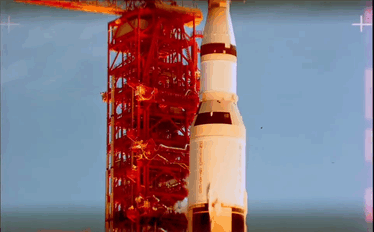

Apollo 11 Launch
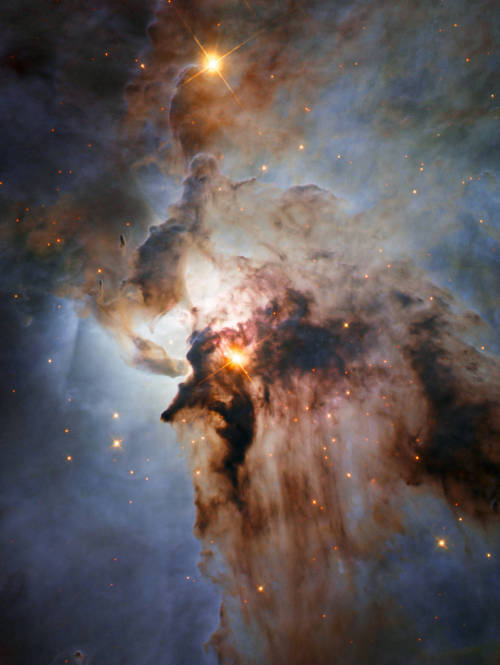
Stormy Seas in Sagittarius
This new NASA/ESA Hubble Space Telescope image shows the center of the Lagoon Nebula, an object with a deceptively tranquil name, in the constellation of Sagittarius. The region is filled with intense winds from hot stars, churning funnels of gas, and energetic star formation, all embedded within an intricate haze of gas and pitch-dark dust.
Image Credit: NASA/JPL/ESA/J. Trauger

Curiosity drill site reveals that under its red surface, Mars is grey-blue
via reddit

The Heart Nebula or IC 1805, lies some 7500 light years away from Earth and is located in the Perseus Arm of the Galaxy in the constellation Cassiopeia. This is an emission nebula showing glowing ionized hydrogen gas and darker dust lanes.
Image Credit: Simon Addis








TODAY IN HISTORY: Behold these beautiful shots of the Earth taken from the Gemini 5 spacecraft on August 25, 1965.
(NASA/ASU)

The Comet and the Star Cluster : Comet Linear has become unexpectedly bright. The comet, discovered in 2000, underwent a 100-fold outburst just a week before it passed a mere 14 lunar distances from Earth late last month. The comet was captured here last week at about magnitude 6 just bright enough to be seen by the unaided eye passing in front of the distant globular star cluster M14. Comet 252/P LINEAR is one of a rare group of comets that vacillate between the Earth and Jupiter every 5 years. How the comet will evolve from here is unknown, but hopes run high that it will remain a good object for binoculars in northern skies for the next week or two. via NASA
js
When a star more massive than our sun reaches the end of its life cycle, it goes in a spectacular blaze of glory known as a supernova. This explosion indicates that the star is dunzo, dead, or whatever we call it in the parlance of our times. But a new study found that one unusual star zombie-Jon-Snowed itself and as an astronomer tells Inverse, no one knows quite how.
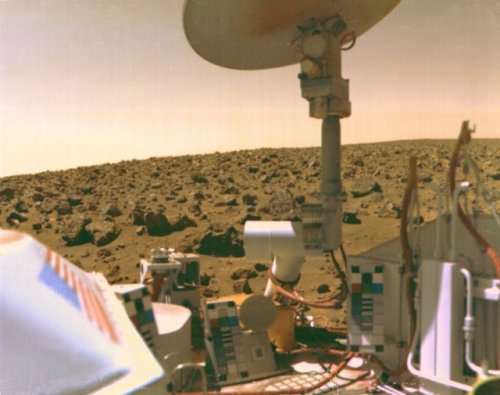
A boulder-strewn field of red rocks stretches across the horizon in this self-portrait of Viking 2 on Mars’ Utopian Plain. Viking 2 landed Sept. 3,1976, some 4,600 miles from the twin Viking 1 craft, which touched down on July 20.
Image Credit: NASA/JPL

This stunning multi-mission picture shows off the many sides of the supernova remnant Cassiopeia A. It is made up of images taken by three of NASA’s Great Observatories, using three different wavebands of light. Infrared data from the Spitzer Space Telescope are colored red; visible data from the Hubble Space Telescope are yellow; and X-ray data from the Chandra X-ray Observatory are green and blue.
Image credit: NSA/JPL
The NASA Village
Today in the NASA Village… Making More with Less

Stacey Boland works at NASA’s Jet Propulsion Laboratory (JPL) on missions that use remote sensing instruments for Earth observation. From space, we can learn so much about our changing environment here on Earth.
Maximizing science research requires finding creative and cost effective ways to do it! Her team developed the ISS-RapidScat instrument using left over equipment NASA had in storage from a program launched in the 1990’s. ISS-RapidScat is an external payload mounted to the outside of the Columbus module, part of the International Space Station. ISS-RapidScat measures ocean wind speed and direction to help track tropical cyclones and hurricanes. Stacey’s team was able to get a functioning piece of hardware for about a tenth the cost of a traditional “small” Earth science mission.
Stacey said, “It wasn’t easy, but it was worth it! Working in the space program doesn’t require perfection - but it does require passion and hard work! We work as a team here at NASA and everyone’s role is important. We rely on each other to do our best, regardless of what part of the mission is “ours.” All the parts need to work together for it to be a success and that takes teamwork and good communication!”
Stacey’s story represents how being creative in the NASA Village can really make a difference!

Where did Stacey get her hunger for space? “When I was growing up, my dad and I would learn about each shuttle mission and then watch launches on TV together. It was fun learning about science and exploration together. Now, as a parent, I’m continuing on that tradition with my son”
“I was able to watch the SpaceX-4 launch in person with my mom, dad, husband, and son”, Stacy said. “It was absolutely incredible to share that experience with them. My son still talks about it and has been practicing drawing rockets ever since. He often asks when we can go back to Florida to see another one!”
Experiencing a rocket launch in person is amazing. Feeling the sound waves from the engines push against your body is quite a rush. And when it is hardware you helped create, on its way into space, it makes that experience even more special.
Next time on the NASA Village… A visit to the NASA Village inspires a lifelong career.
Do you want more stories? Find our NASA Villagers here!
-
 zurgy-space reblogged this · 11 months ago
zurgy-space reblogged this · 11 months ago -
 zurgy liked this · 11 months ago
zurgy liked this · 11 months ago -
 demichrising liked this · 1 year ago
demichrising liked this · 1 year ago -
 venagrey liked this · 1 year ago
venagrey liked this · 1 year ago -
 ceane reblogged this · 2 years ago
ceane reblogged this · 2 years ago -
 nyaahilism liked this · 2 years ago
nyaahilism liked this · 2 years ago -
 arty-holly reblogged this · 2 years ago
arty-holly reblogged this · 2 years ago -
 arty-holly liked this · 2 years ago
arty-holly liked this · 2 years ago -
 iwannarunaway-13 reblogged this · 2 years ago
iwannarunaway-13 reblogged this · 2 years ago -
 iwannarunaway-13 liked this · 2 years ago
iwannarunaway-13 liked this · 2 years ago -
 rosewaternymphe liked this · 2 years ago
rosewaternymphe liked this · 2 years ago -
 punjabibeauty liked this · 3 years ago
punjabibeauty liked this · 3 years ago -
 tellyclear liked this · 3 years ago
tellyclear liked this · 3 years ago -
 hoodinyi reblogged this · 4 years ago
hoodinyi reblogged this · 4 years ago -
 hoodinyi liked this · 4 years ago
hoodinyi liked this · 4 years ago -
 sizzlingcowboydeputyangel liked this · 4 years ago
sizzlingcowboydeputyangel liked this · 4 years ago -
 mustangshelbyguy reblogged this · 4 years ago
mustangshelbyguy reblogged this · 4 years ago -
 ssatyanarayanaraju liked this · 4 years ago
ssatyanarayanaraju liked this · 4 years ago -
 goseti liked this · 4 years ago
goseti liked this · 4 years ago -
 hasart-blog1 liked this · 4 years ago
hasart-blog1 liked this · 4 years ago -
 queenmorningrose liked this · 4 years ago
queenmorningrose liked this · 4 years ago -
 somehow-i-got-an-account reblogged this · 4 years ago
somehow-i-got-an-account reblogged this · 4 years ago -
 somehow-i-got-an-account liked this · 4 years ago
somehow-i-got-an-account liked this · 4 years ago -
 merlinfreya27 reblogged this · 4 years ago
merlinfreya27 reblogged this · 4 years ago -
 merlinfreya27 liked this · 4 years ago
merlinfreya27 liked this · 4 years ago -
 babushkababyboy liked this · 4 years ago
babushkababyboy liked this · 4 years ago -
 el-brillo-de-la-oscuridad reblogged this · 4 years ago
el-brillo-de-la-oscuridad reblogged this · 4 years ago -
 el-brillo-de-la-oscuridad liked this · 4 years ago
el-brillo-de-la-oscuridad liked this · 4 years ago -
 que-esperas-dando-lomejorde-ti reblogged this · 4 years ago
que-esperas-dando-lomejorde-ti reblogged this · 4 years ago -
 reichsmarshall liked this · 4 years ago
reichsmarshall liked this · 4 years ago -
 undostres-pormi reblogged this · 4 years ago
undostres-pormi reblogged this · 4 years ago -
 xnefer reblogged this · 4 years ago
xnefer reblogged this · 4 years ago -
 primutive reblogged this · 4 years ago
primutive reblogged this · 4 years ago -
 schtupel liked this · 4 years ago
schtupel liked this · 4 years ago -
 gnosismacedonia liked this · 4 years ago
gnosismacedonia liked this · 4 years ago -
 pandoras-main-heart reblogged this · 4 years ago
pandoras-main-heart reblogged this · 4 years ago -
 pandoras-main-heart liked this · 4 years ago
pandoras-main-heart liked this · 4 years ago
For more content, Click Here and experience this XYHor in its entirety!Space...the Final Frontier. Let's boldly go where few have gone before with XYHor: Space: Astronomy & Spacefaring: the collection of the latest finds and science behind exploring our solar system, how we'll get there and what we need to be prepared for!
128 posts